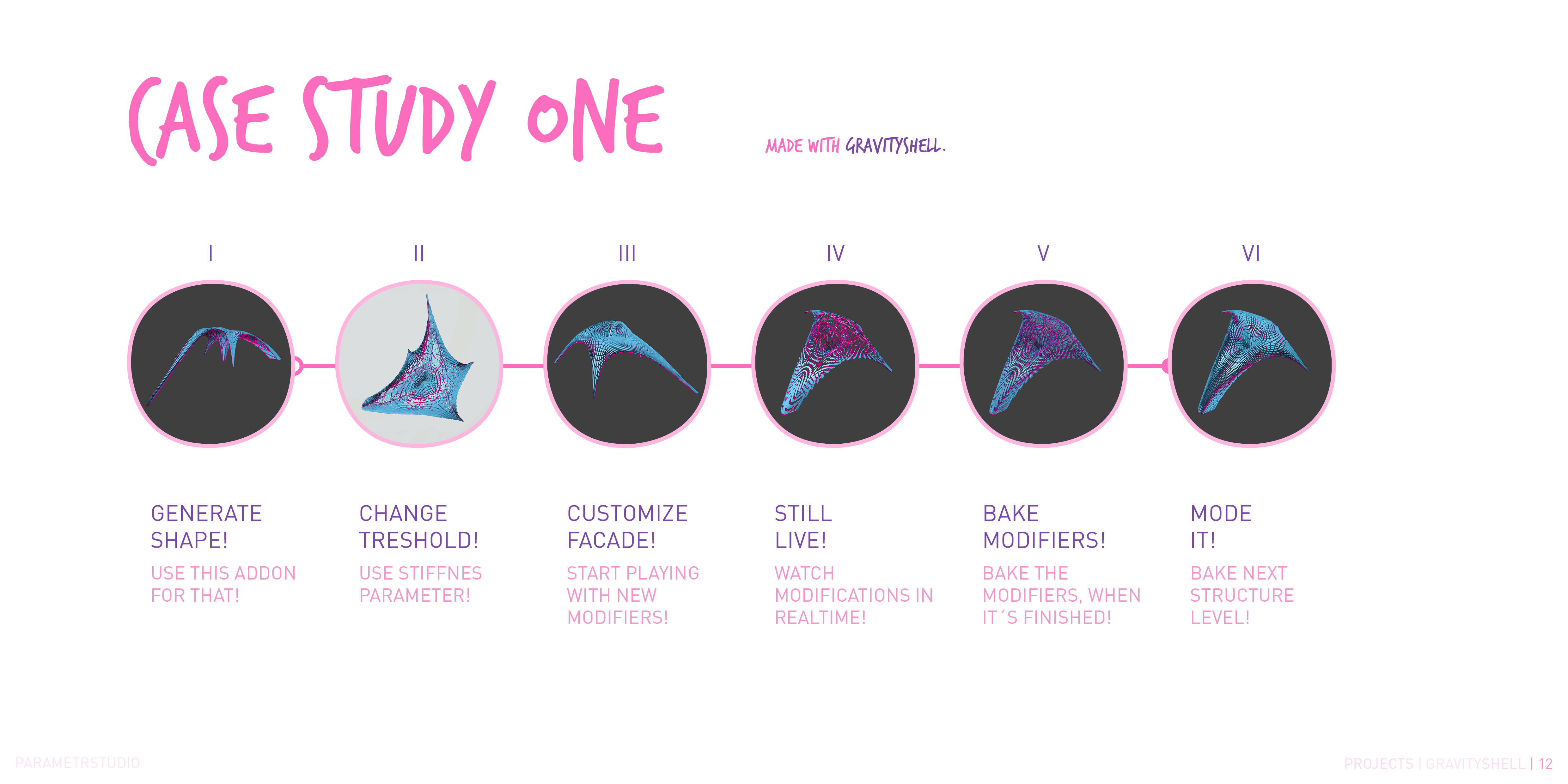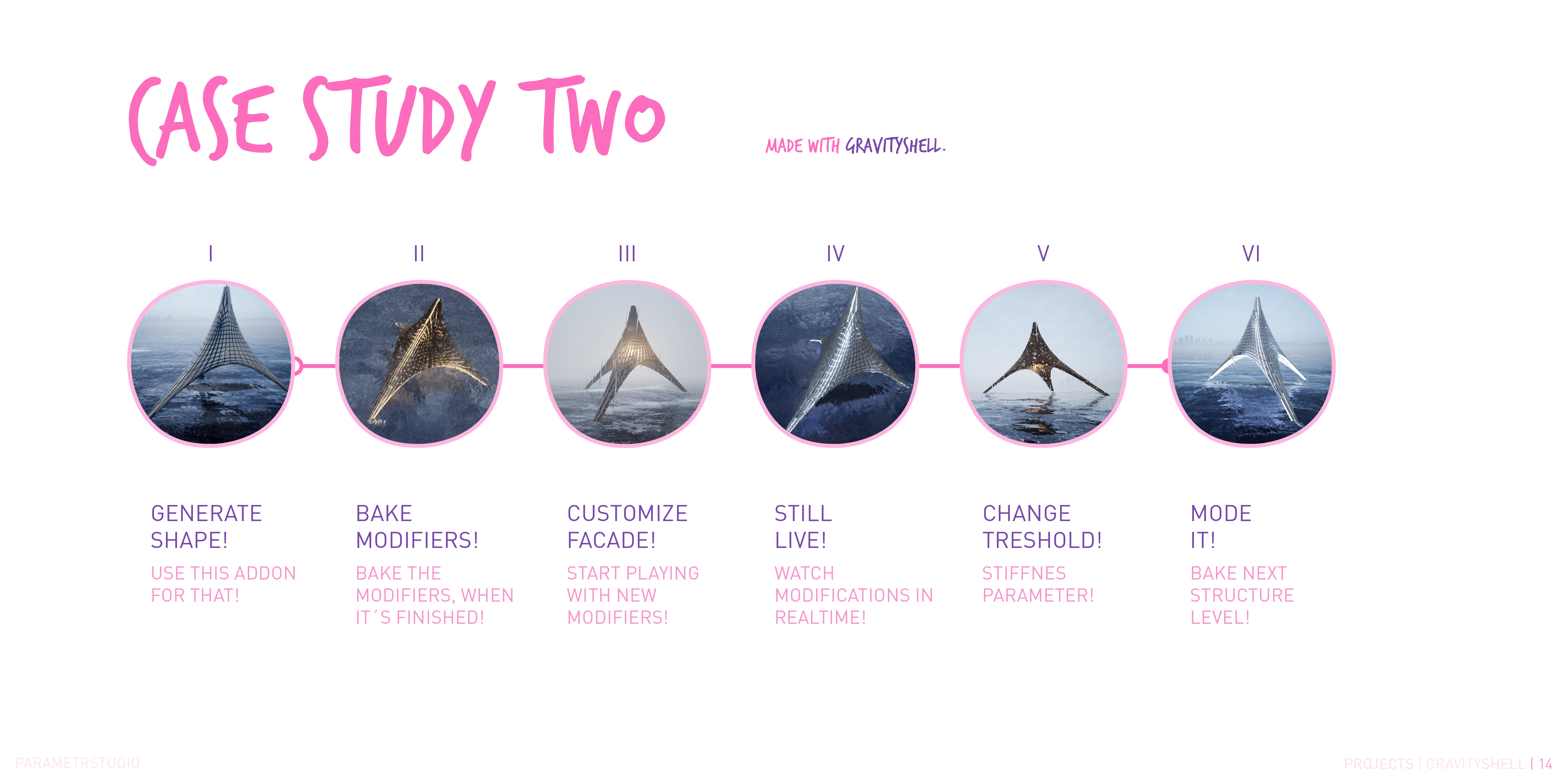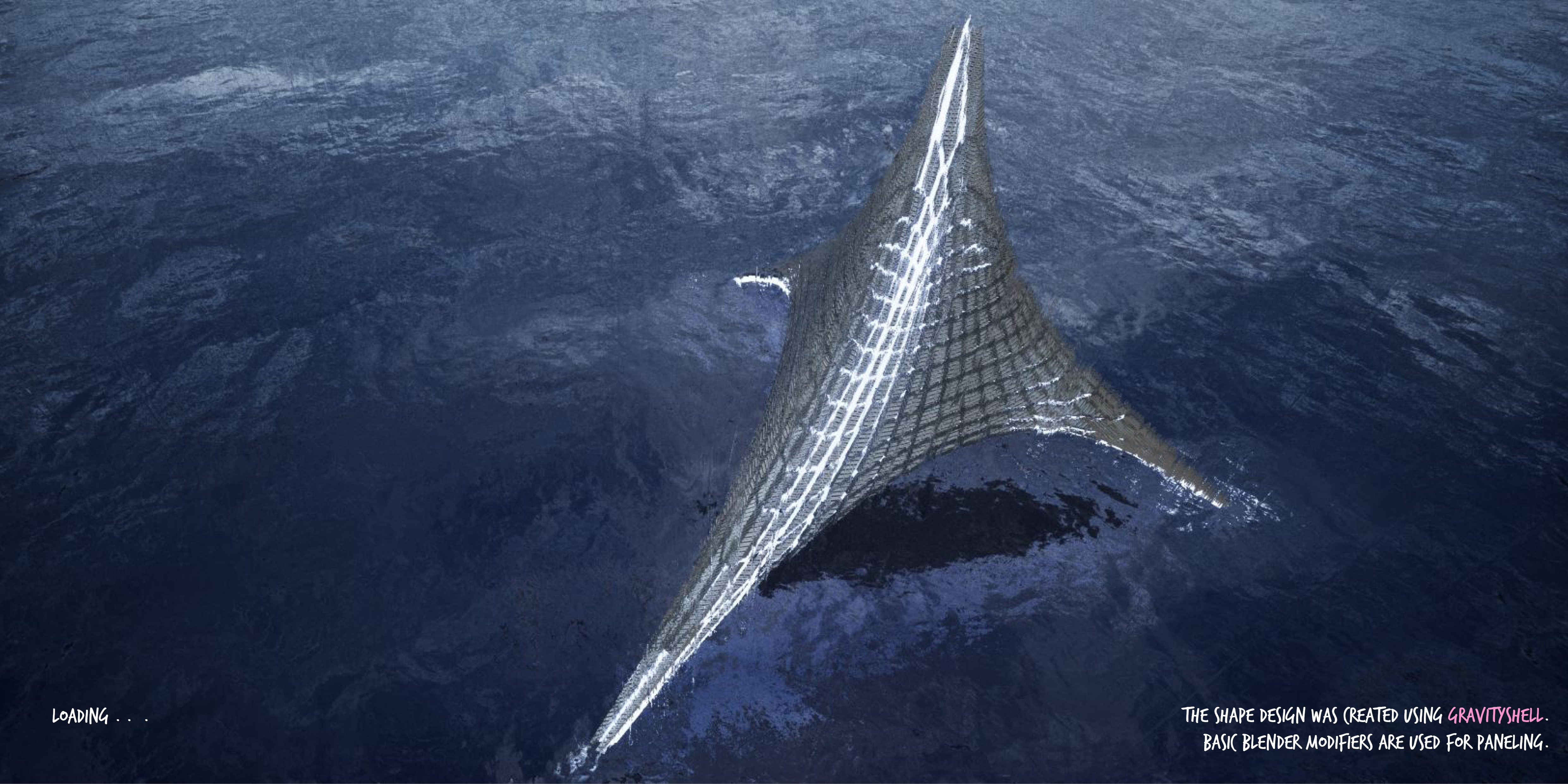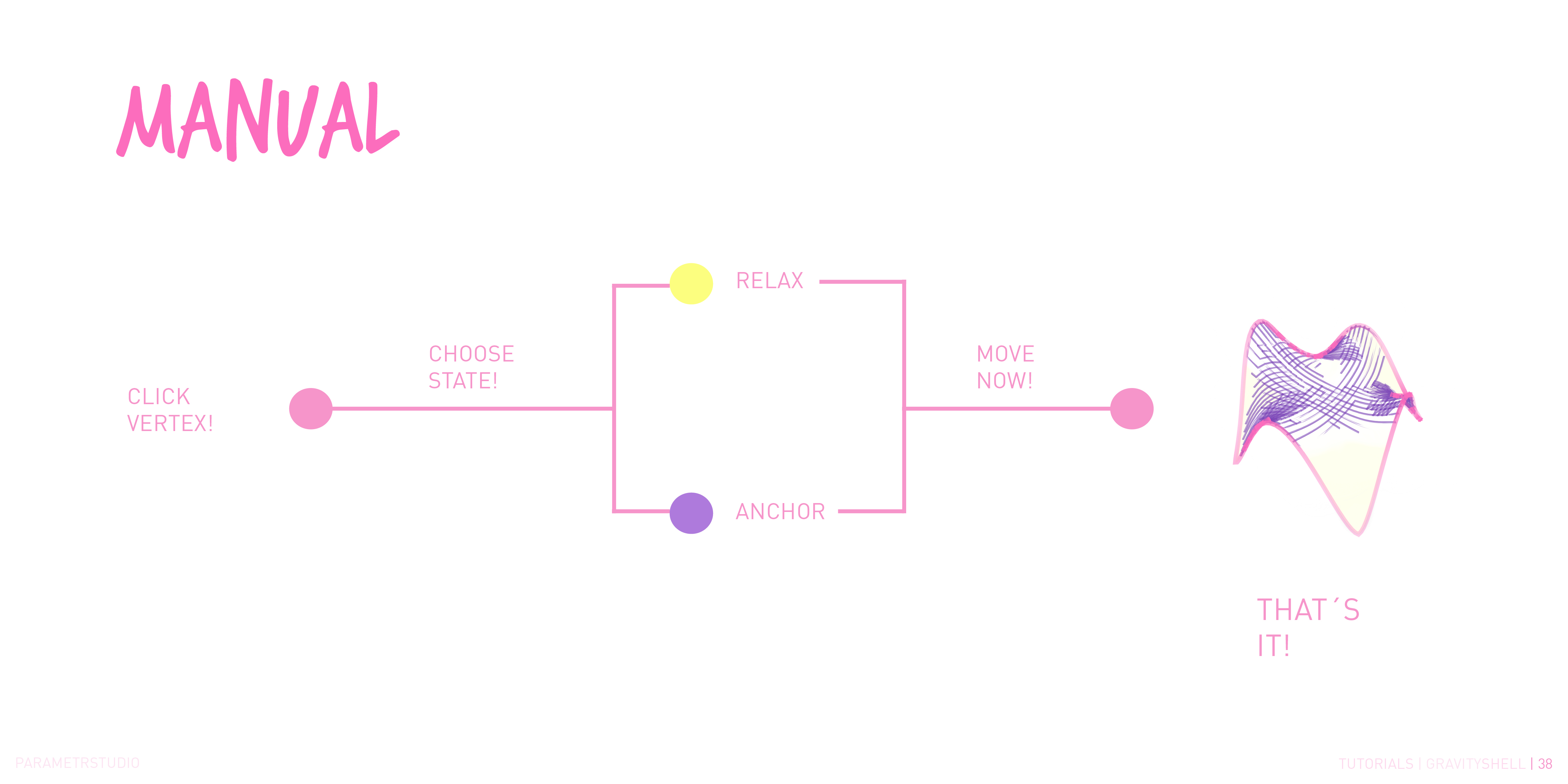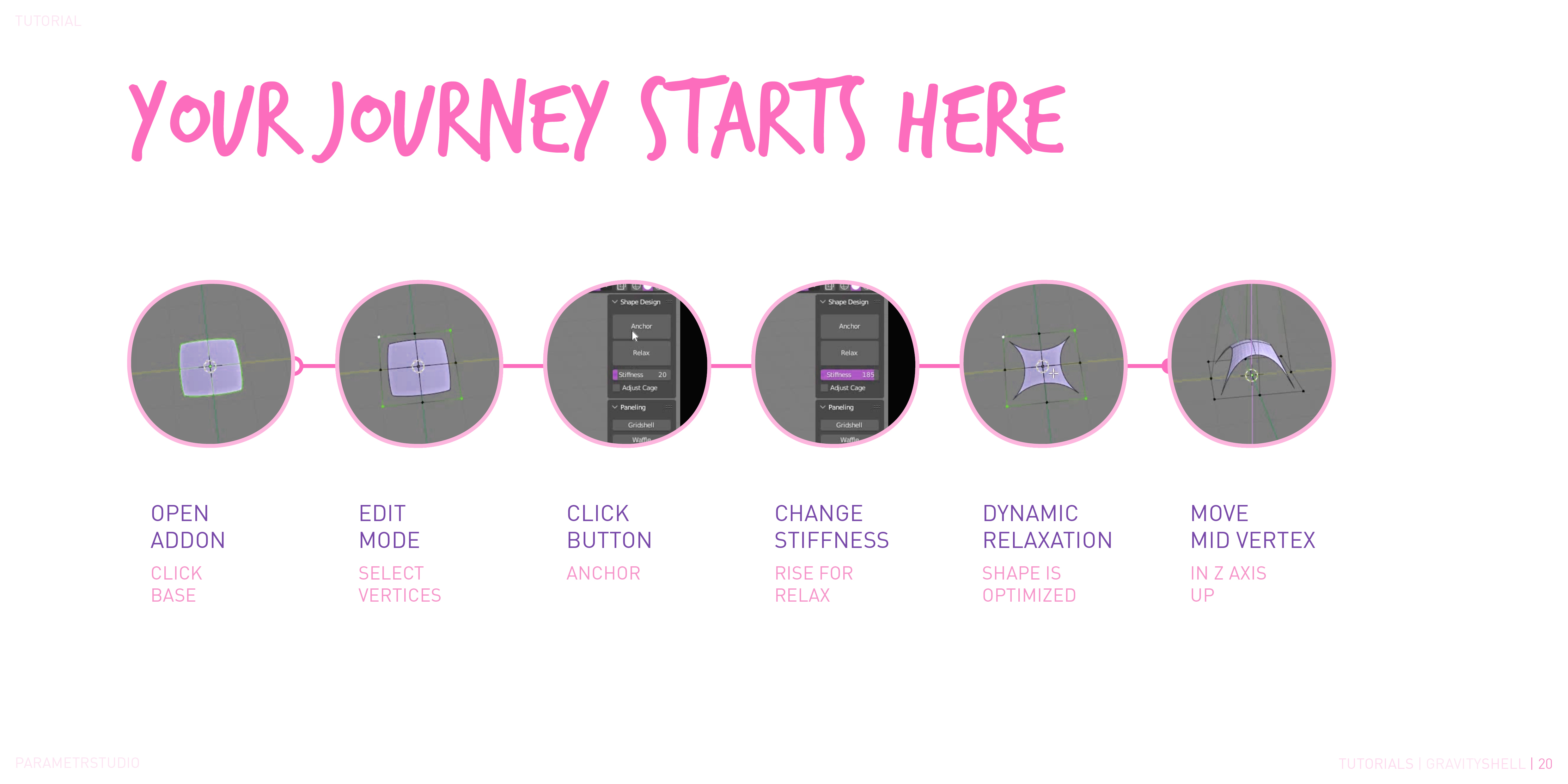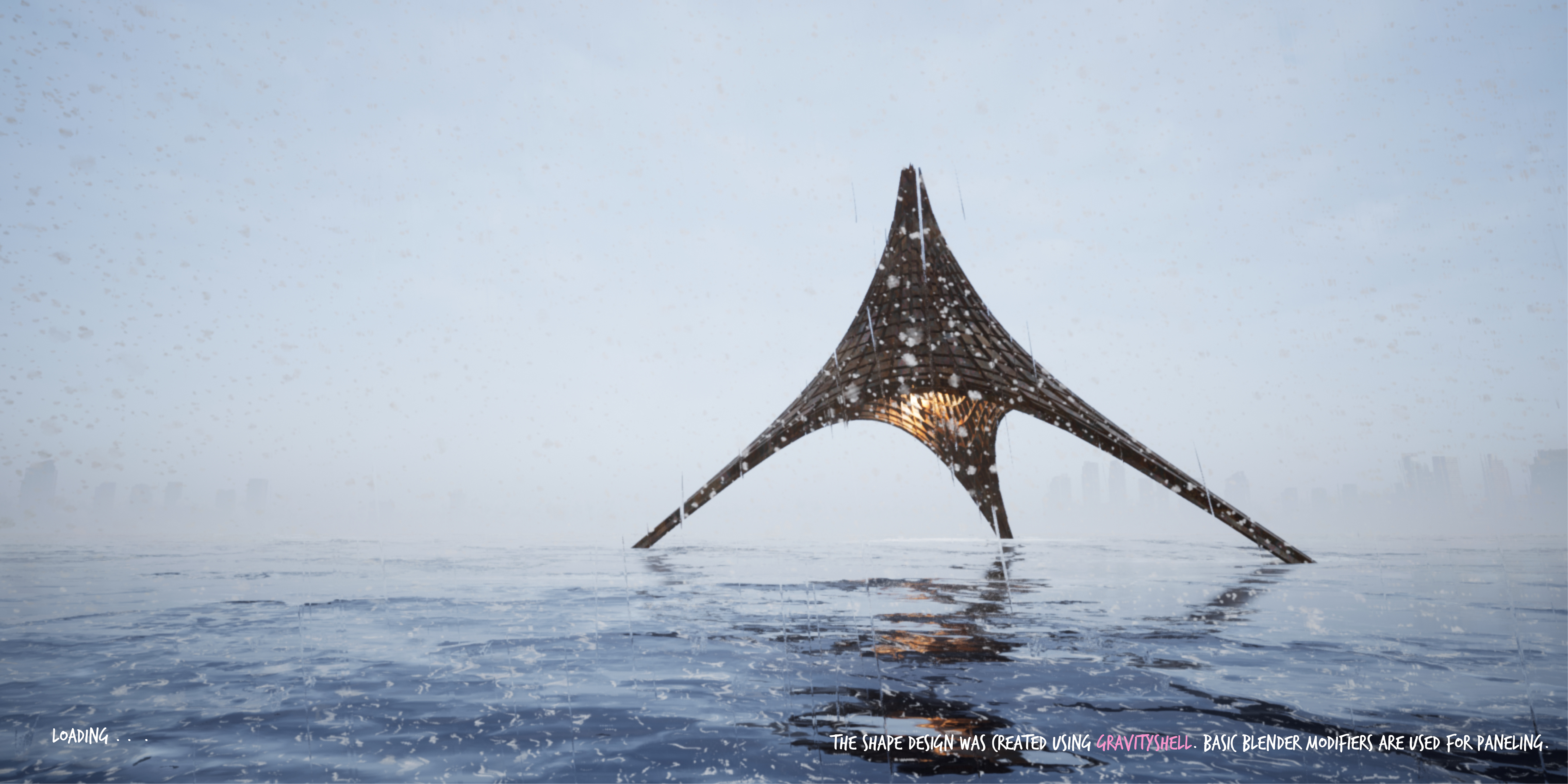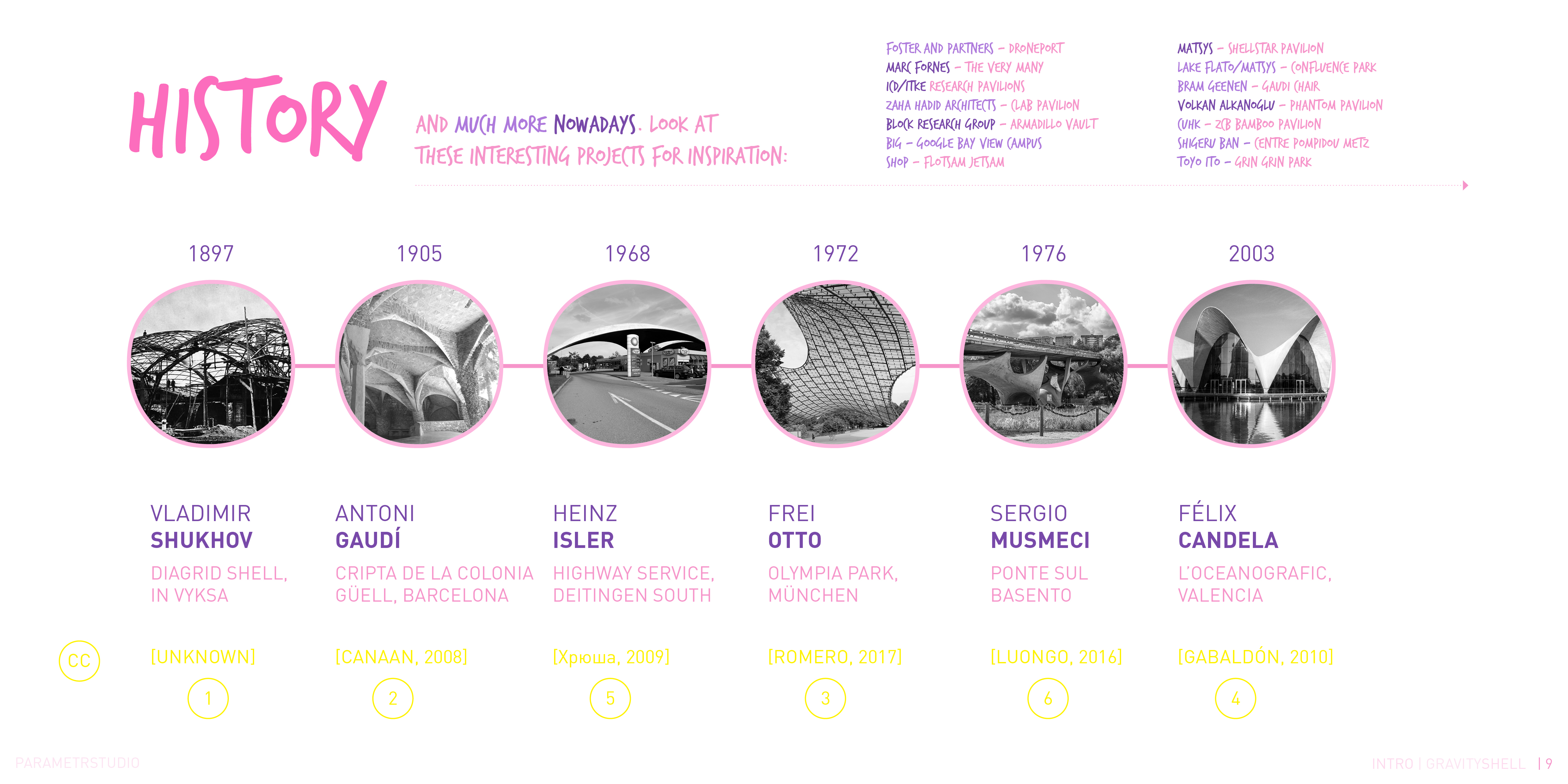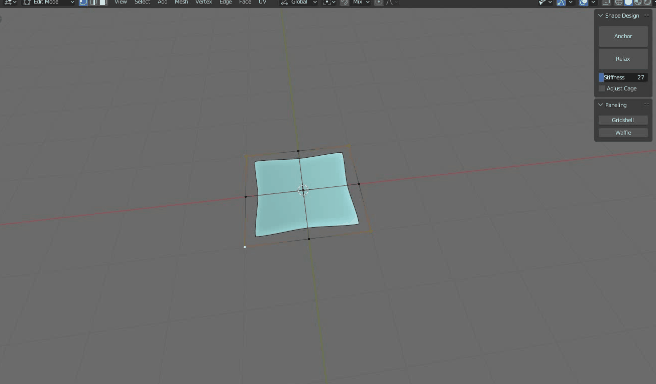Gravityshell
0. SHOWCASE
Blender 3D designs generated with Gravity Shell rendered with AI-powered workflow with Stable Diffusion.
I. MOTTO:
“Physically simulated surfaces for architecture in Blender
without coding.”“Dynamic relaxation modeling tool.”
“Design by Forces.”
II. IDEA / OBJECTIVE:
The main goal of the addon is to obtain surfaces based
on physical forces,
without any knowledge of coding or scripting.
III. ABOUT:
GravityShell works as a modeling tool for complex geometric surfaces for Blender. It serves mainly as a Shape Generator. The advantage is the fast generation of organic surfaces derived from the action of internal forces in the structure. These aesthetically distinct shapes are very effective in terms of statics in the real world.
IV. OPTIONS:
A) TENSILE STRUCTURES
Using this natural optimization, even minimal surfaces can be achieved. These are surfaces with a minimum area size. Usually, a minimum thickness can be achieved within the structure using these surfaces.
The goal is to achieve minimum tension in the structure. Generated surfaces would function as self-supporting in a real building with minimal stress on the structure, which is associated with saving material and thus reducing the price. Aesthetically unique shapes are an added value.
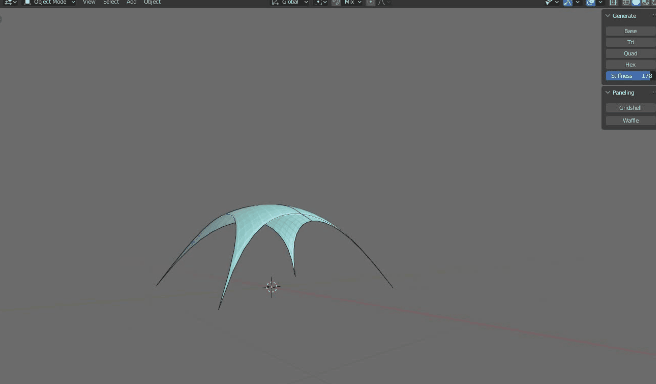

V. HOW IT WORKS:
There is no exact calculation in the addon. The proposals, therefore, mainly serve for the initial phase of the project. Even so, the outputs are very close to complex calculation systems. Relaxation and tension are simulated using a combination of commands integrated into a Blender. Addon unifies them and thus simplifies the work for the creation of shells or membrane structures.
VI. USE:
It could mainly help to quickly obtain a large number of proposals in the initial part of the design process. It can also simply verify conceptual options for a given site area. The working model can be easily prepared for 3D printing in Blender.
VII. ARCHITECTURE BACKGROUND:
Similar principles can be seen in history in the
buildings Antoni Gaudí (catenary surfaces), Frei Otto (minimal tensile
surfaces) and Félix Candela (hypersurfaces). Nowadays, we can see signs of
digitally controlled design based on physical simulations in the works of Zaha
Hadid Architects, Toyo Ito, BIG, Matsys, Fernando Romero, or Marc
Fornes/TheVeryMany. VIII. STORY BEHIND:
During my architectural practice, I completed dozens of parametric design workshops. Methods commonly used to achieve these forms include either directly written code or complex node systems in visual algorithmic editors such as Grasshopper for Rhinoceros or Sverchock(Pulga Physics) for Blender. GravityShell should be used for the initial shot of the design, to create a quick idea of the possibilities and potential of the structures, before they could be hardly generated based on the exact data in other software. I hope, and I believe, that the tool can very well develop creative thinking about the project and lead to extreme acceleration and the creation of many unexpected variants.
IX. DISCLAIMER:
The addon only simulates approximate physics behavior.
This is not an exact calculation. Despite general methods for the same results,
is this workflow extremely fast. However, the resulting simulation is
approximate and a structural engineer should be consulted for the construction.X. SHARE
Feel free to share your work. We will be grateful if you tag us on Instagram for your projects with @parametrstudio. We will be happy to provide comments, suggestions, and tips for future development and evaluations. Keep in touch. We hope, that the GravityShell application will help make your work easier. Relax and enjoy. ;)
XI. UPDATES
1.01. - Plates - New paneling system for generating facade cladding. Real-time work with live data is possible.
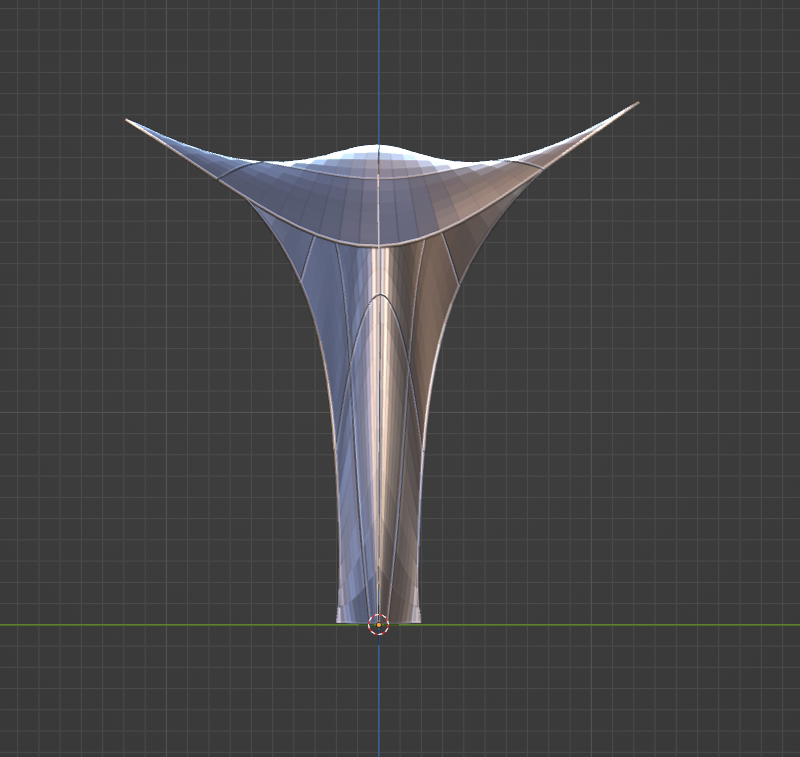

Discover more products like this
force gravitation statics spring23 winter24 surface plugin summer23 kangaroo static hanging rhino physical physics rope gridshell spring24 tool parametric modeling simulation paraboloid hypar vault gravityshell modeling parametric addon membrane structures sverchok minimal grasshopper serpens relaxation optimalization minimal surface tensile realtime shell otto frei model hyperbolic structural gravity parametric generative Gaudi optimization structure loveblender







